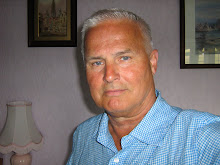For many HR practitioners being able to provide a logical business case and proper evaluation that links HR investment to key financial outcomes would represent a huge step forward for their credibility. Yet, it is a fact that we typically spend large sums of money implementing leadership development programmes, talent management, employer branding etc, and almost nothing on assessing their strategic impact. In part, this is because we believe that it is impossible to measure intangibles - what's meaningful isn't measurable and what's measurable isn't usually meaningful. So we justify our actions on the basis of acts of faith or attempt to persuade senior managers with arguments along the best practice, 'everyone is doing it', so 'we don't want to be left behind' lines (often following attendance at some networking event). Unreflective copying and jumping on the bandwagon, alongside legal requirements (themselves often based on 'best practice'), are the main drivers and justification for spending vast sums of money on 'soft' initiatives. This is why institutional theorists argue most organizations and their HR architectures end up looking the same, and, as the more perceptive strategists point out, where is the competitive advantage (or even best practice) in that?
So it is with some relief (not total) that I've picked up two recent American books. One, the Differentitated Workforce' by Becker, Huselid and Beatty, I will leave for a later post because it is more mainstream and I'm currently testing some of their ideas with a group of great HR managers from Getinge as we speak. The other is Wayne Cascio and John Boudreau's 'Investing in People: Financial Impact of Human Resource Initiatives'. This book is probably the best I've read in the field, in part because it deals with measures in a sophisticated way, in part because it not so much a book about measures but about understanding the logics that link strategic decisions to human capital initiatives and their outcomes. John Boudreau is a 'name' on the HR circuit following his book in 2007 on 'Beyond HR', while Wayne Cascio I know from my time working at the University of Colorado where he teaches and researches. Wayne wrote one of the first books on measuring HR and this works represents the culmination of a long career in introducing rationalism into the HR profession.
For me, the highlights of their book are three-fold. The first is the LAMP framework, which states that you can only use HR metrics as a force for strategic change if you have the right logic (that link your measures to competitive advantage, pivotal points through causal modelling, etc), the right measures (timely, reliable and available data) the right analytics (good questions and analysis of data) and the right processes (good knowledge management in the organization and a culture that supports learning, not just assessment, from measurement).
The second is the use of yield curves to examine the types of jobs (and people) where firms should invest their money for the greatest return. Boudreau tackled this in his earlier book and the book by Becker et al also make great play of this very important point that it is the range of performance variation in jobs (the difference between best performance and poor performance) that helps determine this yield. The most quoted example is Disney: where do you put your money for greatest return ie satisfied customers, Mickey Mouse or the street sweepers who are key customer relations people? The answer is for a small extra investment in selecting and developing street sweepers you get an enormous yield in satisfied customers because their performance varies so much; investing more in the characters playing Mickey Mouse etc is unlikely to yield such returns because the performance variation in these characters has been effectively drilled out so that one Mickey Mouse is no different to another. You can apply this analogy in healthcare, education and many other jobs - well worth thinking about.
The third key element is the focus on causal modelling and logic. This is fast becoming de rigeur among sophisticated HR functions and forms part of a project we are conducting for the Scottish Governement and ESRC. The core argument is that organizations need to develop the right logic linking their HR practices to business unit or strategic peformance. Sounds logical but it is not what most organizations do, judging by the use made of engagement models and engagement data in the firms I observe. So if you are involved in assessing employee engagement, just reading the chapter on the logics of engagement (derived from sound evidence-based academic research) will be worth your time and money alone.
Two words of warning. This is not an easy read for the more mathematically challenged, but don't be put off because the arguments are the most important element in the book (and you can always employ a statistician). Second, it begins to sound a little like best practice by railing against best practice, just like the Becker et al book I'll discuss next. I'm always worried by the idea there is only one way or the highway approaches to HR, which this is close to becoming. There are some important assumptions and simplifications in this book that just don't stand close scrutiny. For all that, this is one of the HR books of the year for me, and I will use it extensively in teaching and consulting.
The Most Popular HBR Podcast Episodes of 2025
-
Listeners’ favorites on becoming a better conversationalist, managing up,
boosting productivity, and more.
13 hours ago





.jpg)


No comments:
Post a Comment